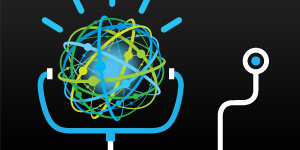I have to admit that I was jealous when I read that my alma mater and “old training grounds,” Case Western Reserve and the Cleveland Clinic, were engaging IBM’s Watson to further clinical diagnosis, treatment, efficiency and even medical and patient education. It is the best of all worlds! Everyone could benefit from this partnership including physicians, nurses, medical students, patients, researchers, allied health professionals, families….the list goes on. But how “real” is it?
Here’s what I believe. Watson’s ability to actively “learn” mimics human thought and thus becomes cognitive learning. “He” can reason brilliantly, synthesize far more than I could ever hope to do, and “his” brain never probably feels like it is going to explode! For example, “WatsonPaths can use Watson’s question-answering abilities to examine  the scenario from many angles. The system works its way through chains of evidence — pulling from reference materials, clinical guidelines and medical journals in real-time — and draws inferences to support or refute a set of hypotheses. This ability to map medical evidence allows medical professionals to consider new factors that may help them to create additional differential diagnosis and treatment options.” When you combine this with the human abilities of compassion and empathy, this creates a winning combination. Now, combine these abilities with Watson EMR, which uses natural language processing (NLP) to mine unstructured data in the EMR to gather all of the “clinical pearls” that often get missed with reporting, and you have the perfect package.
the scenario from many angles. The system works its way through chains of evidence — pulling from reference materials, clinical guidelines and medical journals in real-time — and draws inferences to support or refute a set of hypotheses. This ability to map medical evidence allows medical professionals to consider new factors that may help them to create additional differential diagnosis and treatment options.” When you combine this with the human abilities of compassion and empathy, this creates a winning combination. Now, combine these abilities with Watson EMR, which uses natural language processing (NLP) to mine unstructured data in the EMR to gather all of the “clinical pearls” that often get missed with reporting, and you have the perfect package.
For now, these tools are being tested in a learning environment and have not been rolled out for use in the clinical arena. I can only hope that one day I will be able to use Watson to help diagnose and treat patients in an efficient, value based, high acuity environment. Do you think it will happen? Send me your thoughts!
